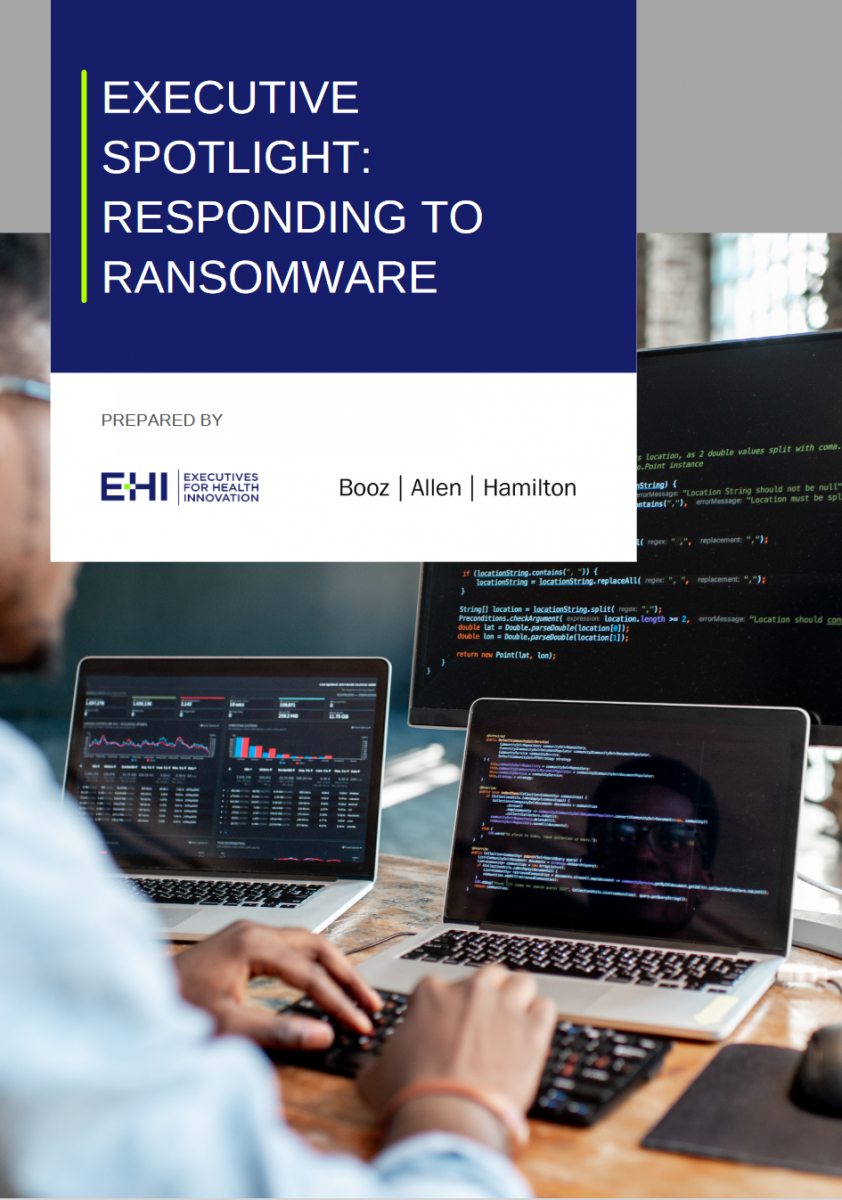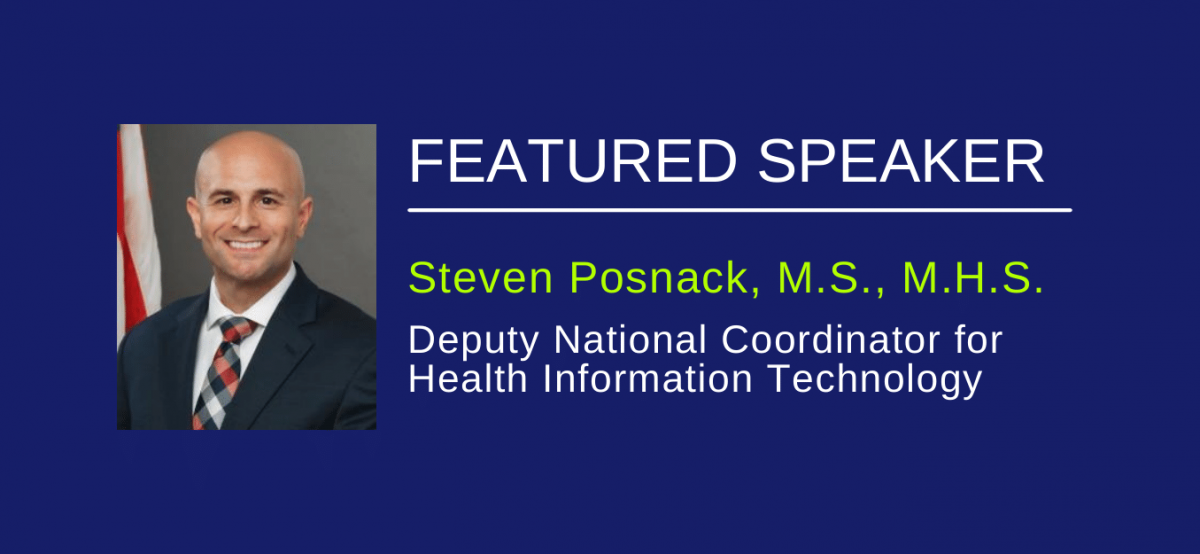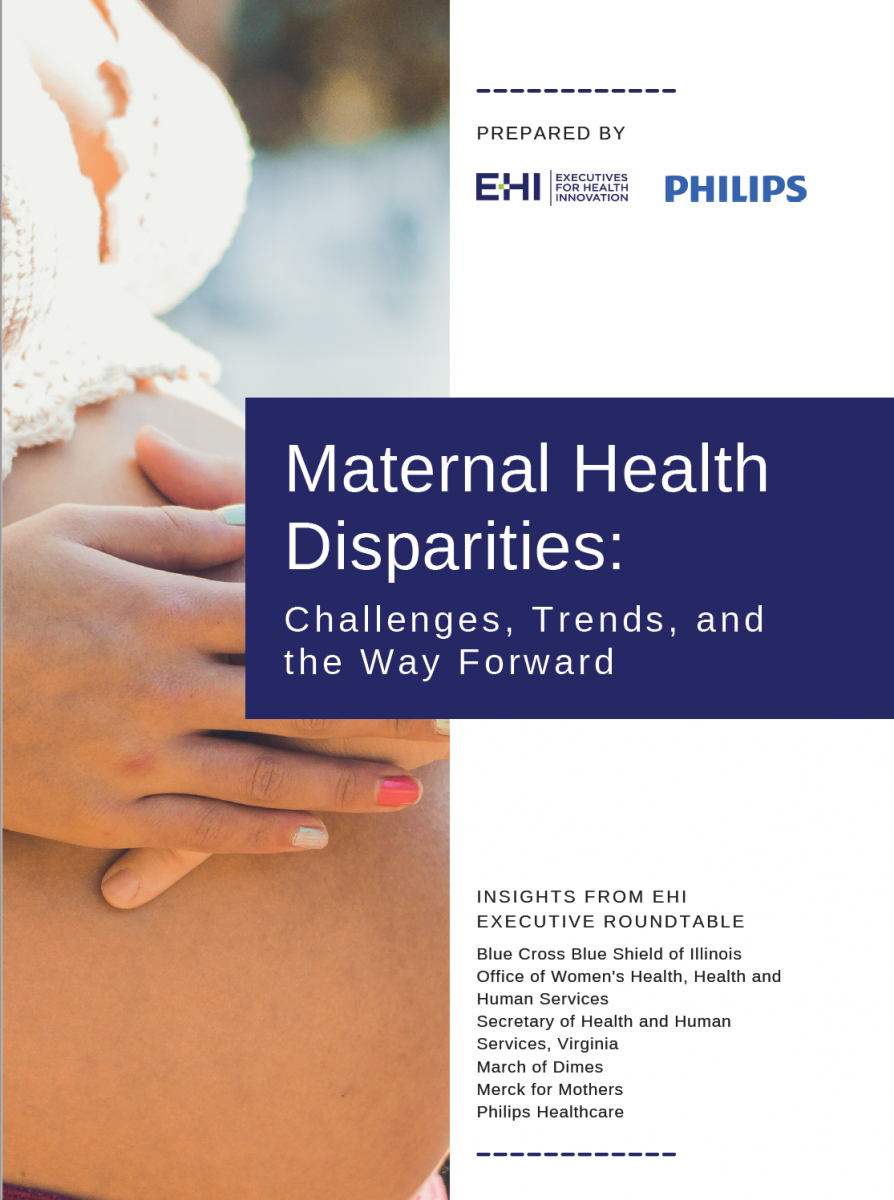Report: Executive Spotlight: Responding to Ransomware
Actionable advice from cybersecurity experts
|
Preparing for the inevitable cyber attack takes time, money, and extra hard work. There is no one right way to prepare, nor is there a single solution to picking up the pieces after the attack. Ransomware events in particular demonstrate that context, insights, and diverse perspectives are critical in planning for how health delivery organizations (HDO) remain resilient to ensure patient safety and peace of mind. Booz Allen partnered with Executives for Health Innovation (EHI) to hold an expert roundtable entitled Responding to Ransomware Attacks: Practical Advice and Experiences. During the session, executives and cybersecurity experts discussed why attacks occur, how hospitals and health systems can better prepare and respond to these attacks, and the pros and cons of paying the ransom. This publication illustrates Booz Allen’s approach and EHI’s guidance to members on effectively mitigating cyber attacks against hospitals and healthcare systems, including:
|
 |
EHI Member Policy Briefing - January 2022
The January 2022 EHI Member Policy Briefing featured an interactive conversation with Steven Posnack, Deputy National Coordinator for Health Information Technology on what lies ahead for the Office of the National Coordinator for Health IT in 2022.
ONC announced the Trusted Exchange Framework and the Common Agreement (TEFCA). TEFCA establishes a universal floor of interoperability across the country by creating simplified nationwide connectivity for health agencies, health care providers, health information networks, health plans, individuals, public, and others.

About the Member Policy Briefing
Each month (the third Tuesday), Executives for Health Innovation (EHI) host a member-only monthly policy briefing featuring policymakers, staff, and health policy experts. This is a great opportunity to learn about timely issues and their impact on health IT and digital health. The 30-minute interactive discussion is held virtually and is a great opportunity to engage directly with experts on policies directly impacting your organization.
To learn more, contact Catherine Pugh, Assistant Vice President of Policy at EHI.
Philips and EHI Release Report, Maternal Health Disparities: Challenges, Trends, and the Way Forward
Washington, DC – January 20, 2022 - Today, Philips and the Executives for Health Innovation (EHI) released a report entitled Maternal Health Disparities: Challenges, Trends, and the Way Forward. The report contains insights from an Executive Roundtable comprised of experts from the U.S. Department of Health & Human Services, March of Dimes, Merck for Mothers, Blue Cross Blue Shield of Illinois and Philips.
Report: Maternal Health Disparities: Challenges, Trends, and the Way Forward
|
Prepared by Executives for Health Innovation (EHI) and Philips Healthcare, and based on a 2021 EHI roundtable, Maternal Health Matters: Equitable Access, Care, and Technology, this timely new report explores the maternal health crisis and offers real-world examples and solutions designed to eliminate disparities in maternal health and reduce maternal mortality rates. Areas of Focus:
|
 |
 |
Report: Vaccination Scheduling, Administration,and Documentation in a Digital World
In a panel discussion, Executives for Health Innovation (EHI) CEO Jennifer Covich Bordenick joined executives from Change Healthcare to discuss the topic of vaccination scheduling, administration and documentation in a digital world.
The hour long discussion was focused on implementing touchless workflows to adopt to consumer preferences.
Report: Maturing Virtual Care Tribal Communities
This Executive Roundtable Panel focused on how Native Americans/Alaskan Natives are using telehealth to reach patients in resource constraint communities to combat the COVID-19 pandemic. The discussion addressed the data gaps and challenges, funding sources, the existing digital divide and provider innovations in the delivery of care.
Report: Clinical Communication and Collaboration: Redefining the Patient Journey for Better Outcomes
As the pandemic evolved, an added strain was placed on Emergency Departments (EDs) with the need to isolate COVID-19 patients from those seeking emergent care and non-COVID-19 care. Minimizing time spent in the ED or bypassing the ED altogether, along with the suspension of facility-based elective care, became a priority. This caused a shift in the traditional patient journey. There was a heightened interest in virtual assessments and notification systems to improve the flow of patients through EDs.
eHI collaborated with Everbridge to create this report.
eHI Responds: Social Determinants of Health Caucus: Request for Information
eHI staff met with members of our Policy Steering Committee and SDOH workgroup to develop a formal response to the Congressional SDOH Caucus’s Request for Information. To learn more about the Caucus, click here.
eHI Summary: American Recovery Plan Act
eHI Summary: The American Rescue Plan Act, a $1.9 trillion COVID-19 relief and economic stimulus package. The legislation contains provisions related to health IT and digital health, including:
- Sec. 1002 – Emergency Rural Development Grants for Rural Health Care. Appropriates $500,000,000 for the Secretary of Agriculture to award grants for activities including increasing telehealth capabilities, including underlying health care information systems.
- Sec. 2301 – Funding for COVID-19 Vaccine Activities at the Centers for Disease Control and Prevention. Appropriates $7,500,000,000 to the Secretary of Health & Human Services to carry out activities to plan, prepare for, promote, distribute, administer, monitor, and track COVID–19 vaccines. The funds shall be used for providing technical assistance, guidance, and support to, and awarding grants or cooperative agreements to, State, local, Tribal, and territorial public health departments for enhancement of COVID–19 vaccine distribution and administration capabilities, including information technology, standards-based data, and reporting enhancements, including improvements necessary to support standards-based sharing of data related to vaccine distribution and vaccinations and systems that enhance vaccine safety, effectiveness, and uptake, particularly among underserved populations.
- Sec. 2401 – Funding for COVID-19 Testing, Contact Tracing, and Mitigation Activities. Appropriates $47,800,000,000 to the Secretary of Health & Human Services to carry out activities to detect, diagnose, trace, and monitor SARS–CoV–2 and COVID–19 infections and related strategies to mitigate the spread of COVID–19. With these funds, the Secretary shall address certain requirements, including enhance information technology, data modernization, and reporting, including improvements necessary to support sharing of data related to public health capabilities.
- Sec. 2707 – Funding for Community-Based Funding for Local Behavioral Health Needs. Appropriates $50,000,000 for the Secretary of Health & Human Services, acting through the Assistant Secretary for Mental Health and Substance Use, to award grants for activities including providing mental and behavioral health services to individuals with mental health needs (including co-occurring substance use disorders) as delivered by behavioral and mental health professionals utilizing telehealth services.
- Sec. 11001 – Indian Health Service. Appropriates $6,094,000,000 to the Secretary of Health & Human Services, $140,000,000 of which shall be for information technology, telehealth infrastructure, and the Indian Health Service electronic health records system.
To view the full legislative text, click here.
Case Study: Remote Patient Monitoring
One top-three integrated delivery network (IDN) was facing a challenge: it was unable to manage the growing number of patients with chronic conditions. Past remote patient monitoring (RPM) programs lived outside the EHR in onerous web-based dashboards because integrating data into flowsheets and existing workflows came with exorbitant costs. To meet the various needs of stakeholders, the IDN partnered with Validic to implement a cost-effective approach to RPM.

